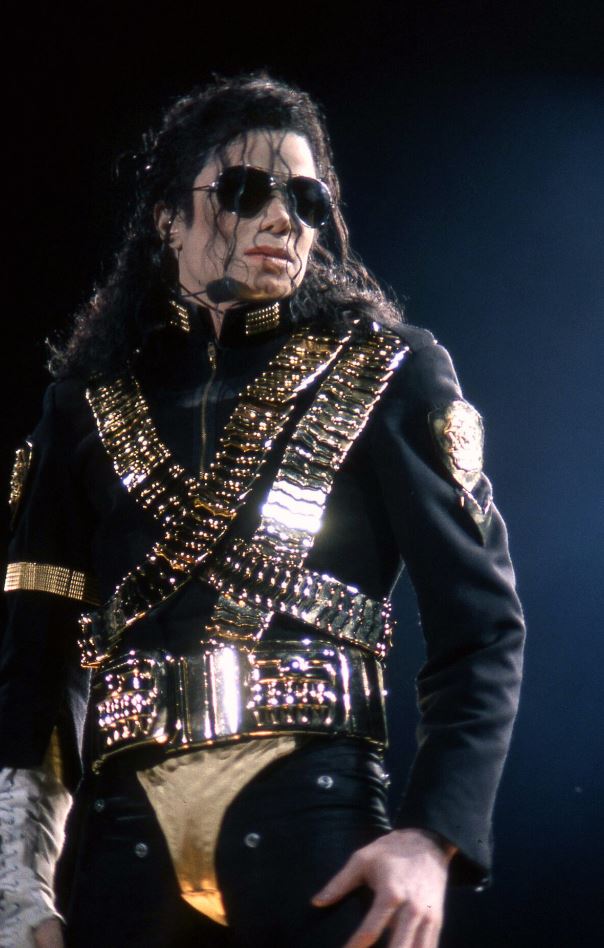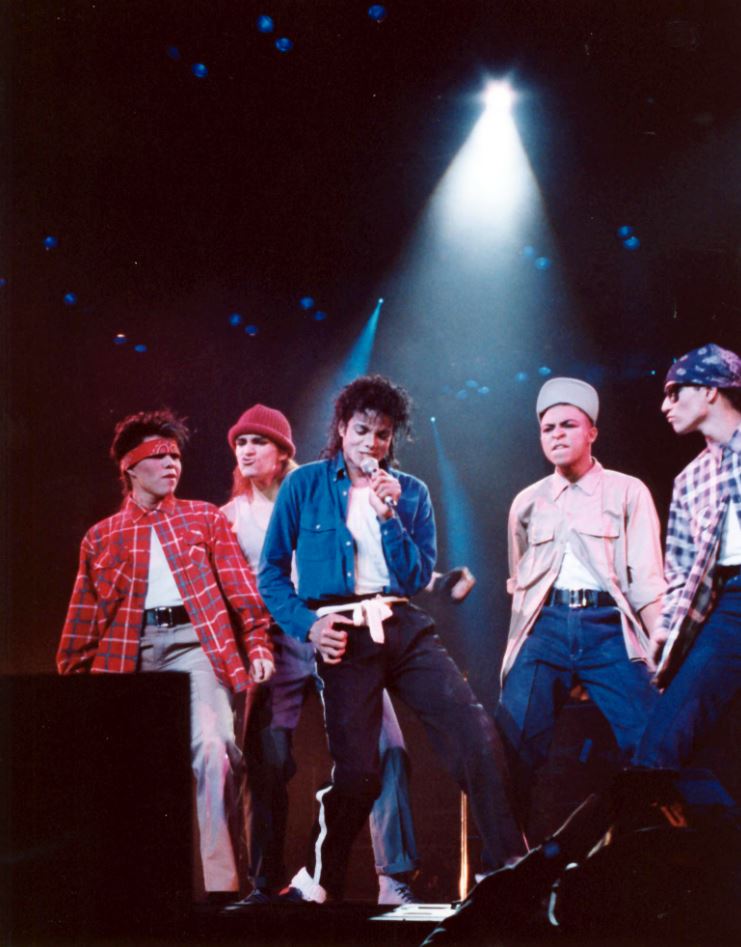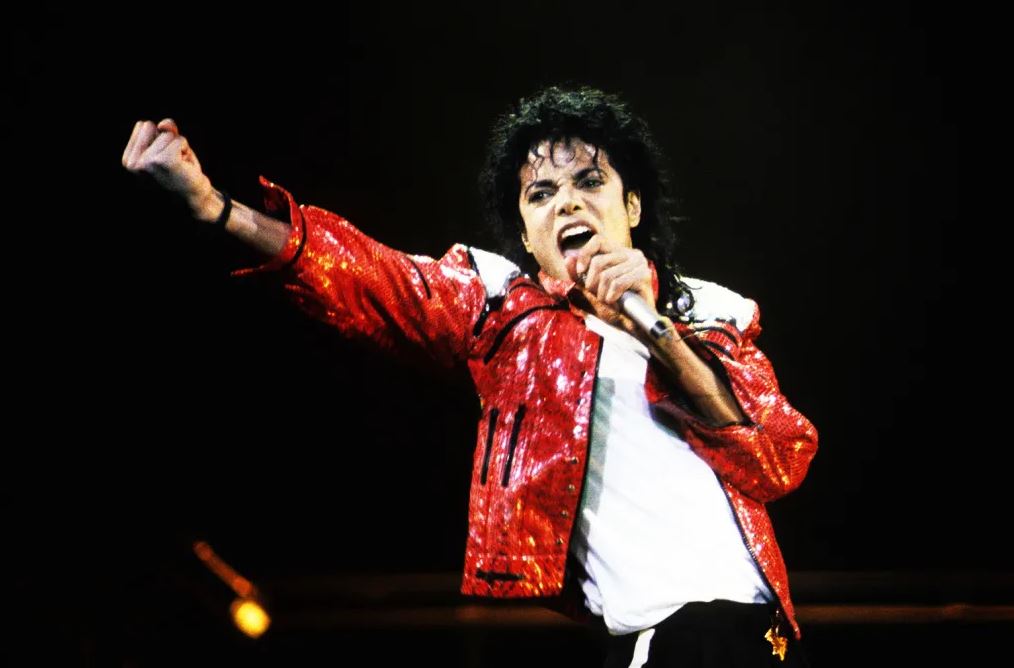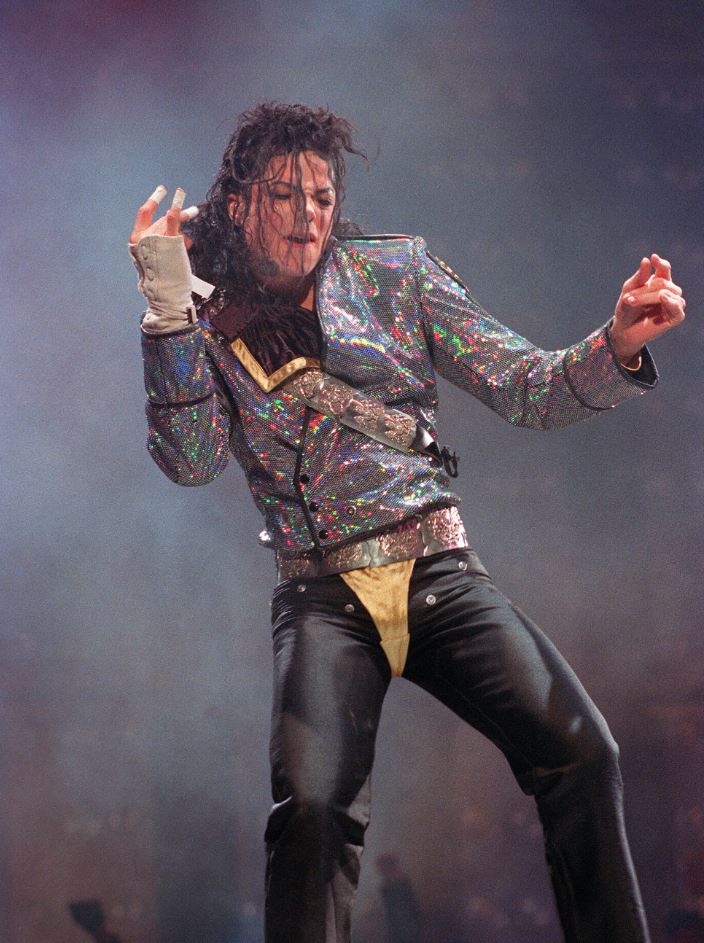Michael Jackson, often heralded as the “King of Pop,” not only transformed the landscape of popular music but also redefined the spectacle of live performances. His career, marked by groundbreaking music and electrifying dance moves, reached its zenith with list of Michael Jackson’s concert tours, which were more than just musical events; they were grand cultural phenomena that captivated millions worldwide.
Jackson’s journey into the realm of live music began in the early 1970s when he toured extensively with his siblings as part of the Jackson 5. This experience laid the foundation for his understanding of stagecraft and audience engagement, elements that would later characterize his solo performances. The dynamic on stage during these formative years, coupled with the group’s infectious blend of pop and soul, captured the hearts of audiences across the globe and set the stage for Michael’s solo ventures.
In 1987, Michael Jackson embarked on his first solo world tour, the Bad World Tour, marking a significant transition from a group member to a solo superstar. This tour was in support of his album “Bad,” a critical and commercial juggernaut that included a string of chart-topping singles. Unlike the family-friendly performances of the Jackson 5, Michael’s solo concerts were elaborate affairs that showcased his unique blend of singing, dancing, and theatricality.
The Bad World Tour set new standards for live music performances with its unprecedented scale and sophistication. It featured state-of-the-art stage setups, stunning visual effects, and elaborate choreography that perfectly complemented Jackson’s music. This tour not only solidified his status as a global icon but also highlighted his ability to connect with audiences from different cultural backgrounds, making him a universal symbol of music and entertainment.
Through his solo tours, Michael Jackson didn’t just perform music; he created an immersive experience that brought his studio recordings to life, allowing fans to witness the magic of his artistry in a live setting. This introduction to his world tours offers a glimpse into the transformative impact Michael Jackson had on live music, setting the stage for a deeper exploration of his legendary performances.
| Aspect | Details |
|---|---|
| Early Career | Toured with the Jackson 5 in the 1970s, gaining experience in stagecraft and audience engagement. |
| First Solo Tour | Launched the Bad World Tour in 1987, transitioning from group member to solo superstar. |
| Album Supported | Supported his album “Bad,” which included chart-topping singles and was a critical and commercial success. |
| Performance Style | Concerts featured elaborate stage setups, stunning visual effects, and sophisticated choreography. |
| Impact | Set new standards for live performances, solidified his status as a global icon, and showcased his ability to connect with diverse audiences. |
Contents
Main Concert Tours
1. Bad World Tour (1987-1989)
Overview
The Bad World Tour marked Michael Jackson’s first solo concert tour, designed to promote his seventh studio album, “Bad.” This tour not only showcased his talents as a solo artist but also emphasized his break from the ensemble performances of the Jackson 5 era.
Highlights
Starting Point and Scope: The tour kicked off in Tokyo, Japan, and spanned 15 countries, demonstrating Jackson’s wide-reaching appeal across continents.
Record-breaking Attendance: In Japan alone, the first 14 shows attracted 450,000 attendees, setting a new record for the country. The European leg saw phenomenal demand too, particularly at London’s Wembley Stadium, where the ticket requests could have filled the venue 20 times over.

Royal Audience: Among the notable attendees were Diana, Princess of Wales, and Prince Charles, adding royal prestige to his concerts.
Grand Finale: The tour concluded dramatically in Liverpool at the Aintree Racecourse with a massive crowd of 125,000, marking it as the tour’s largest show.
Impact
Financial and Record-Setting Success: The Bad tour grossed over $125 million, securing its place in the Guinness World Records for the largest grossing tour of that time and the tour with the highest attendance.
Awards and Recognition: It was nominated for “Tour of the Year” at the International Rock Awards, highlighting its cultural and commercial impact.
2. Dangerous World Tour (1992-1993)
Overview
Initiating in Munich, Germany, the Dangerous World Tour supported Jackson’s eighth studio album, “Dangerous,” and spanned over a year, covering numerous countries across Europe, Asia, and Latin America.
Highlights
Global Reach: Every concert was sold out, reinforcing Jackson’s status as a global music icon.
Bucharest Broadcast: The tour’s concert in Bucharest was televised globally by HBO, setting high viewership records and showcasing Jackson’s widespread influence.
Charity
Commitment to Charity: All profits from the tour were donated to various charities, including Jackson’s own Heal the World Foundation, underscoring his dedication to humanitarian causes.
Charitable Impact: The exact figures raised demonstrated Jackson’s ability to leverage his performances for charitable efforts, significantly impacting the charities he supported.
3. HIStory World Tour (1996-1997)
Overview
This tour promoted both Jackson’s ninth studio album, “HIStory: Past, Present and Future, Book I” and his remix album “Blood on the Dance Floor: HIStory in the Mix.” It is noted for its extensive reach and high attendance.
Highlights
Global Touring: The tour touched 58 cities across 35 countries, emphasizing Jackson’s enduring worldwide appeal.
Record Attendance: Attracting over 4.5 million fans, it became the most attended tour of all time by any artist, grossing over $165 million.
Special Performances
Sultan’s Birthday Concert: In 1996, Jackson performed at a specially constructed amphitheater in Brunei for Sultan Hassanal Bolkiah’s fiftieth birthday, showcasing his influence and demand among high-profile international figures.
MJ & Friends Concerts: These concerts, held in 1999, aimed to support children affected by the Kosovo War and other global crises, featuring collaborations with prominent artists like Slash, Mariah Carey, and Luciano Pavarotti.
| Tour | Overview | Highlights | Impact and Special Notes |
|---|---|---|---|
| Bad World Tour (1987-1989) | First solo concert tour to promote the “Bad” album. It marked a shift from ensemble to solo performances. | – Began in Tokyo, covered 15 countries. – Record-breaking attendance in Japan and Europe. – Royal audience including Princess Diana. – Largest show in Liverpool with 125,000 attendees. | – Grossed over $125 million, setting records for gross and attendance. – Nominated for “Tour of the Year” at the International Rock Awards. |
| Dangerous World Tour (1992-1993) | Supported the “Dangerous” album. Spanned Europe, Asia, and Latin America over a year. | – Sold-out concerts worldwide. – Concert in Bucharest broadcast globally by HBO. | – All profits donated to charities, including the Heal the World Foundation. – Significant charitable impact through fundraising. |
| HIStory World Tour (1996-1997) | Promoted the “HIStory” and “Blood on the Dance Floor” albums. Noted for its extensive reach and attendance. | – Toured 58 cities across 35 countries. – Most attended tour ever by any artist, with over 4.5 million attendees. | – Grossed over $165 million. – Special performances for the Sultan of Brunei and MJ & Friends concerts for charity. |
Benefit Concerts and Special Performances
1. MJ & Friends Concerts (1999)
Purpose:
The MJ & Friends concerts were meticulously orchestrated to gather financial support for the children affected by the Kosovo War and other international humanitarian crises. This initiative by Michael Jackson highlighted his enduring commitment to global philanthropy, using his platform to advocate for the most vulnerable.
Highlights:
Locations and Global Impact: These concerts were held in South Korea and Germany, locations chosen for their strategic significance and ability to draw large audiences.
Star-Studded Line-Up: The events featured a diverse array of global music icons, including Slash, the Scorpions, and Boyz II Men, each bringing their unique talents to support the cause. This collaboration among artists from different musical backgrounds emphasized the universal appeal and unifying power of music.

Audience and Reception: The concerts successfully attracted tens of thousands of fans, generating significant media coverage and public interest, which in turn helped to raise awareness and substantial funds for the affected children.
2. United We Stand: What More Can I Give (2001)
Background:
In response to the devastating September 11 attacks, Michael Jackson spearheaded the United We Stand: What More Can I Give benefit concert. This event was part of a broader initiative aimed at healing and rebuilding morale while demonstrating solidarity with the victims and their families.
Details:
Broadcaster and Outreach: Broadcast nationally, this concert showcased Jackson’s capacity to mobilize and unify through music. The event was not only a tribute to the resilience of the human spirit but also a powerful fundraiser.
Performances and Impact: The concert featured performances by a range of leading artists and drew a massive live audience. The collective effort underscored the music community’s role in national recovery and support, reflecting Jackson’s leadership in organizing events with profound social impact.
3. Michael Jackson: Live at the Apollo 2002
Purpose:
This concert, held at the iconic Apollo Theater in New York City, served as a critical fundraiser for the Democratic National Committee. Michael Jackson’s participation highlighted his involvement in political and social causes, aiming to engage and motivate public action through his performance.
Outcome:
Fundraising Success: The event successfully raised nearly $3 million, demonstrating the high financial impact entertainers can have on political fundraising.
Historical Significance: This performance was particularly notable as it marked Michael Jackson’s final on-stage appearance, adding a poignant chapter to his storied career. His choice of the Apollo—a symbol of African American culture and music—reinforced his ties to his cultural roots and his enduring legacy in the arts.
Legacy and Influence: The concert not only contributed financially to the intended cause but also served as a testament to Jackson’s multifaceted career, blending artistry with activism, and leaving a lasting imprint on the communities he touched.
These benefit concerts and special performances exemplify Michael Jackson’s deep commitment to humanitarian and social issues, utilizing his immense popularity and talents to influence and aid global causes, thereby cementing his legacy as an artist who truly cared about the world beyond the music.
| Event | Purpose | Highlights | Outcome |
|---|---|---|---|
| MJ & Friends Concerts (1999) | Orchestrated to support children affected by the Kosovo War and other crises. | – Held in South Korea and Germany. – Featured artists like Slash, the Scorpions, and Boyz II Men. – Drew large audiences and raised substantial funds. | Generated significant media coverage and public interest, raising awareness and funds for humanitarian efforts. |
| United We Stand: What More Can I Give (2001) | Organized in response to the September 11 attacks, aimed at national healing and solidarity. | – National broadcast reached wide audience. – Included performances by leading artists. | – Supported national recovery and raised funds. – Showcased Jackson’s leadership in organizing impactful events. |
| Live at the Apollo 2002 | Benefit concert for the Democratic National Committee at the Apollo Theater in NYC. | – Final stage performance by Michael Jackson. – Significant for being held at a symbol of African American culture. | – Raised nearly $3 million. – Enhanced his legacy blending artistry with activism. |
Planned and Cancelled Tours
This Is It (2009-2010)
“This Is It” was poised to be one of the most monumental concert series in music history, marking Michael Jackson’s return to the stage after a decade. Announced in March 2009, the concerts were scheduled to take place at the O2 Arena in London. Initially planned as ten shows, the series was extended to fifty due to overwhelming demand. More than 1.5 million tickets were sold, crashing the ticketing websites within minutes of going live. This tour was not just a comeback; it symbolized a final curtain call, as Jackson hinted at retirement post-tour. The potential earnings from these concerts were projected to be substantial, with an estimate of £50 million for the first ten shows alone.

The tour, however, never took place. Michael Jackson’s tragic death on June 25, 2009, from a propofol overdose, a mere weeks before the tour’s start, turned what was to be a spectacular comeback into a global moment of mourning. The concerts’ preparation footage was later released as a documentary film, “This Is It,” which provided a poignant glimpse of Jackson’s final artistic efforts and dedication.
Cancelled New Year’s Eve 2000 Concerts
Michael Jackson had ambitious plans to headline two millennium New Year’s Eve concerts, one in Sydney, Australia, and the other in Honolulu, Hawaii. The concept was unique: Jackson would perform in Sydney, one of the first major cities to ring in the new millennium, and then fly to Honolulu, one of the last, to perform again, effectively “chasing” the new millennium. However, logistical challenges, including concerns about whether Jackson could make the international flight in time due to strict flight curfews in Sydney, led to the cancellation of the concerts in October 1999. Additionally, Jackson’s focus on producing new music and the technical difficulties of synchronizing such an elaborate global event contributed to the decision to cancel these performances.
| Event | Details | Outcome |
|---|---|---|
| This Is It (2009-2010) | Scheduled at the O2 Arena in London, originally planned for ten shows, extended to fifty due to high demand. Over 1.5 million tickets sold quickly, demonstrating overwhelming public interest. | The tour was cancelled due to Michael Jackson’s untimely death from a propofol overdose on June 25, 2009. The rehearsal footage was later used to create the “This Is It” documentary film. |
| Cancelled New Year’s Eve 2000 Concerts | Planned to perform in Sydney and Honolulu on New Year’s Eve, “chasing” the new millennium by performing in one of the first and one of the last cities to enter the new millennium. | Cancelled in October 1999 due to logistical challenges and technical difficulties, alongside Jackson’s focus on producing new music. |
Television Specials and Notable Appearances
Motown 25 (1983)
The “Motown 25: Yesterday, Today, Forever” special was a televised celebration of Motown Records’ 25th anniversary, but it is perhaps best remembered for Michael Jackson’s performance. During the special, Jackson debuted his soon-to-be-signature moonwalk while performing “Billie Jean,” which not only thrilled the audience but also became one of the most iconic moments in television and music history. This performance solidified Jackson’s reputation as a pioneering entertainer and showcased his profound impact on pop culture. The event was watched by an estimated 47 million people, and Jackson’s performance introduced a new era in live musical artistry.
30th Anniversary Celebration (2001)
This two-night event at Madison Square Garden was a celebration of Michael Jackson’s 30th anniversary as a solo artist. It featured performances by Jackson and a reunion with his brothers, the Jackson 5, for the first time in almost two decades. The concerts were among the highest-grossing and most expensive ticketed events ever, with top-tier tickets including a dinner with Jackson and a signed poster selling for $10,000 each. Jackson reportedly earned $7.5 million for each night. The event attracted over 30 million viewers when broadcast on CBS, reflecting Jackson’s undiminished star power and his significant impact on the music industry. These performances were a testament to Jackson’s enduring appeal and his ability to draw massive audiences, both in person and through television broadcasts.

These planned and cancelled tours, along with the landmark television appearances, underscore Michael Jackson’s immense popularity and the high expectations that followed his career. They also illustrate the complexities and pressures of organizing global music events, and how, despite meticulous planning, external factors can necessitate changes to even the most anticipated performances.
| Event | Description | Impact |
|---|---|---|
| Motown 25 (1983) | Televised event celebrating Motown Records’ 25th anniversary. Michael Jackson performed “Billie Jean” and debuted his moonwalk. | Watched by 47 million people, the performance became one of the most iconic moments in television and music history, catapulting Jackson’s status as a pioneering entertainer. |
| 30th Anniversary Celebration (2001) | A two-night event at Madison Square Garden celebrating Michael Jackson’s 30 years as a solo artist. Featured a reunion with the Jackson 5. | Generated massive audience attention with over 30 million viewers on CBS, and was one of the highest-grossing events, reflecting Jackson’s enduring appeal. |
Michael Jackson’s legacy in live performances remains unparalleled in the annals of music history. As an artist whose career spanned several decades, Jackson transformed the concert experience into a spectacular art form, leaving an indelible mark on the industry and his millions of fans worldwide. His innovative approach to music, dance, and visual presentation helped redefine what it meant to be a performer in the modern era of pop culture.
Michael Jackson’s concerts were more than just musical events; they were immersive experiences that showcased his genius in a multidimensional space. From his early days with the Jackson 5 to his monumental solo tours like the Bad, Dangerous, and HIStory tours, Jackson’s performances were characterized by their meticulous choreography, stunning visual effects, and state-of-the-art technology. Each tour pushed the boundaries of live performance, incorporating elaborate stage setups and pioneering uses of video and special effects, which helped to elevate the concert experience to unprecedented levels.
The scale and success of his tours were a testament to his popularity and influence. Record-breaking attendance and staggering earnings from these events spoke volumes about his global appeal and the magnetic allure of his music and persona. His ability to draw massive crowds was matched by his efforts to ensure each performance was a gateway to a fantastical audio-visual journey, thus setting standards that artists still strive to match today.
Beyond entertainment, Michael Jackson used his platform to highlight social issues and humanitarian causes. His commitment to making the world a better place was evident in the way he leveraged his tours to support various charities. For instance, all the profits from the Dangerous World Tour were donated to his Heal the World Foundation, which aimed to improve the lives of children across the globe. Similarly, his benefit concerts, such as “United We Stand” and “MJ & Friends,” raised millions for victims of natural disasters and wars.
Jackson’s philanthropic efforts were not limited to financial contributions; he also sought to raise awareness about global issues through his music and public appearances. Songs like “Man in the Mirror” and “Heal the World” reflect his desire to inspire change and activism through his art. His ability to connect with people on a deeply emotional level allowed him to use music as a powerful tool for social change, influencing other artists and public figures to take similar paths.
Michael Jackson’s influence extends beyond music and performance; his legacy is also one of cultural impact and humanitarian effort. He inspired a generation of performers who admire not only his musical genius but also his dedication to humanitarian causes. His vision for a better world and his belief in the power of music to heal and unite continue to resonate with artists and fans alike.
In reflecting on Michael Jackson’s career, it is clear that his contributions to music and society were profound. He was more than just a pop icon; he was a visionary who used his talent to entertain, educate, and inspire. His legacy continues to influence the music industry and charitable initiatives, ensuring that his impact will be felt for generations to come.
In conclusion, Michael Jackson remains a monumental figure in the world of music. His breathtaking live performances and his compassionate humanitarian work have cemented his status as one of the most beloved and influential artists of all time. Through his innovative art and philanthropic legacy, Michael Jackson has truly earned the title of the “King of Pop,” leaving an enduring legacy that transcends the boundaries of music and performance.

